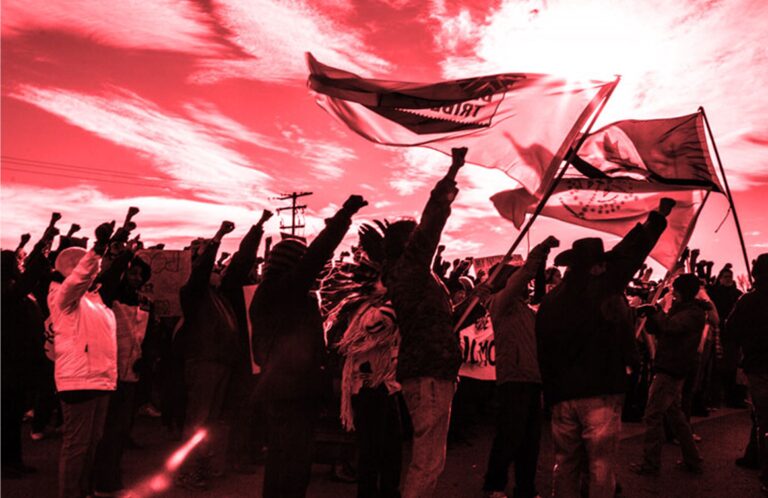The primary author of the modern Canadian Aboriginal grievance and entitlement narrative was Harold Cardinal, the Alberta Cree “boy genius from Sucker Creek.” He was just 24 when he famously stared down Prime Minister Pierre Trudeau and Indian Affairs Minister Jean Chretien and defeated their 1969 White Paper, which was proposing to scrap the Indian Act, dismantle the Department of Indian Affairs, privatize reserve land ownership, transfer responsibility for Indian welfare and education to the provinces and effectively end Canada’s century-old policy of racial segregation. Cardinal immediately followed this political triumph with his best-selling book, The Unjust Society. It made the case for Indians as “Citizens Plus,” a separate, distinct caste of Canadians who, by virtue of their status as the country’s original inhabitants and singular victims of European colonization, had a moral and legal right to pursue their own cultural destiny independent of Canadian society, except that it would provide the land and pay the bills.
Cardinal’s narrative contained all the elements that inform debates over Aboriginal policy today except the one that is the most powerful driver of guilt, grievance, power and money: the “holocaust” that was allegedly perpetrated against Aboriginal children through the Indian Residential Schools system.
It is odd that he overlooked it. In 1951, at age 6, Cardinal entered the Joussard Catholic residential school in Northern Alberta. He spent 10 years there before moving to a regular Catholic high school in Edmonton, where he graduated as class president. The Unjust Society devoted a chapter titled “The Little Red Schoolhouse” to excoriating residential schools for imposing Christian and European values on Aboriginal children. Cardinal even used the term “cultural genocide,” in what may have been its first coinage. However, he was strangely silent on the litany of horrors we now associate with the schools, including ghastly physical and sexual abuse, mass graves of unnamed children, tyrannical teachers and diabolical nutritional experiments. The worst abuse Cardinal recounted was “a misfit, has-been or never-was” teacher in Grade 8 who was so incompetent “I found myself taking over the class.”
By the time Cardinal’s book was republished in 1999, he had discovered the true extent of the atrocities committed in residential schools. It was the Canadian equivalent of Nazi Germany’s Final Solution for the Jews of Europe, he wrote in a new foreword, echoing the rhetoric of contemporary Aboriginal political leaders and their apologists in media and academe. Anyone who dared question this orthodoxy was a blasphemer at best and a hate criminal at worst, as the conservative newsmagazine Alberta Report discovered a year earlier when it challenged the narrative in a cover story titled “Canada’s Mythical Holocaust.”
The story quoted numerous alumni of residential schools who had much good to say about their experiences. Some said the schools rescued them from ignorance, privation and violence at home on their reserves. Many recalled that their parents insisted they get an education, as the parents hoped it would create opportunities for their children in mainstream society. More than one refused to talk or insisted on anonymity, fearing repercussions within their communities. Alberta Report understood their reticence when Phil Fontaine, then grand chief of the Assembly of First Nations and lead architect of the campaign to make residential schools the centerpiece of Aboriginal grievances, initiated a complaint against the magazine with the Alberta Human Rights Commission, alleging that the story subjected Indians to hatred and contempt.
Fontaine’s charge against the magazine went nowhere, but it evidently succeeded in suppressing any further media attempts to add some balance to the history of residential schools. Fontaine, who presented himself as a victim of sexual and physical abuse in a Manitoba residential school, had adroitly leveraged the 1996 findings and recommendations of the Royal Commission on Aboriginal Peoples into a political and financial gold mine. Within two years, he and the AFN extracted a formal apology and a $350-million “healing fund” from the Chretien government.
This was just the beginning. Soon, law firms were trolling for clients to launch civil claims against former teachers and administrators, churches and Ottawa on behalf of thousands of residential school “survivors.” In 2005, the Martin government delivered a $1.9-billion compensation package and launched the Truth and Reconciliation Commission of Canada, which today continues to conduct research, hold hearings and nurture shame across the country.
Along the way, almost everyone associated with the administration of residential schools has apologized or “expressed sorrow” for the treatment of students. The list includes the Anglican Church of Canada, the Oblate Missionaries of Canada, the University of Manitoba (for teaching people who taught in the schools), Pope Benedict XVI and, most recently and most abjectly, Prime Minister Stephen Harper in 2008. Among his 863 words of apology, only one line obliquely acknowledged that some of the 150,000 children who attended the 80 schools from the late 1900s until the last one closed in 1996 might have had an experience that was something less than genocidal. “Some former students have spoken positively about their experiences at residential schools,” said Harper. But these stories, he added, are “far overshadowed by tragic accounts of the emotional, physical and sexual abuse and neglect of helpless children, and their separation from powerless families and communities.”
The best that can be said of Harper’s apology is that it was a strategic attempt to kill the story and move on to a better relationship between Natives and non-Natives. Unfortunately, it only appears to have deepened the conviction that Church and State conspired not only to “kill the Indian in the child” but also to physically exterminate the whole race. The Aboriginal grievance and entitlement narrative continues to gather momentum, as evidenced by last year’s prolific Idle No More protests. And the $60-million Truth and Reconciliation Commission, far from working toward its stated objective of getting the whole story and then getting over it, appears wholly dedicated to the permanent entrenchment of a one-dimensional caricature of the history of residential schools.
The dangers in this ought to be obvious and can hardly be overstated. Already, vast swathes of the public education system are uncritically regurgitating the genocide story as if it were fact, thereby adding to the legions of Canadian voters who will be suckers for future Phil Fontaines and Harold Cardinals and their never-ending demands for more tax dollars and greater political autonomy. It will slow any progress on integration, democratic reform and financial transparency on reserves and do nothing to reduce the terrible social pathologies afflicting Indians on and off the reserves. Worse, if future generations of young Aboriginal people are indoctrinated in the belief that Canada wilfully tried to annihilate their ancestors, some of them, at least, will be ripe recruits for radical segregationist movements, perhaps even violent insurgencies as imagined in Douglas Bland’s frighteningly plausible 2010 novel Uprising, about Aboriginal terrorism in near-future Canada.
This juggernaut must be stopped, but how? First, people in the media, academe and politics have to find the courage to start questioning the residential schools orthodoxy. Among the “survivors” of the system, there must be hundreds if not thousands who know in their hearts that most of the teachers, administrators, priests, pastors, nuns, bureaucrats, politicians and Indians who designed and ran the system were motivated by an altruistic desire to help a colonization-shattered people adapt to their new reality. They genuinely believed that education and integration represented the path to survival, not extermination. Their “victims” may rightly accuse them of paternalism, but this is a far cry from mass murder. We need to get the recollections of students and teachers on the record, in an interview context that is free of political coercion, before their time has passed.
Second, something must be done to overcome the perverse financial incentives that currently reward stories of abuse. How can we possibly arrive at anything resembling the truth when billions of dollars are being offered for only one side of the story? Perhaps some of the money currently earmarked for reparations should be used to establish a legitimate commission of enquiry for gathering testimony, under oath, in a legal process that is not hopelessly biased toward any particular version of the truth.
Third, we need to provide context. While Indian kids were going to residential schools in the early to mid-20th century, thousands of white kids were going to boarding schools. More than a few of them were beaten, sexually abused and tyrannized by teachers who were better suited for minding inmates than students. These children grew up in sod huts on the Prairies, endured the horrors of the Depression and the world wars and somehow got through it all without imagining they were the victims of a racist conspiracy to wipe them off the Earth. They were sodomized at Upper Canada College and strapped with belts and paddles, not just at boarding schools, but at regular public schools too. While Indians endured worse than most, bad things have always happened to good people, and from our 21st-century perspective, life in many parts of Canada was manifestly Hobbesian, without regard to race or culture.
Context is also needed to refute the “intergenerational legacy” of residential schools. The idea that victimization of one generation automatically passes to their descendants defies human experience. If it were true, the survivors and descendants of the Nazi Holocaust would be humanity’s basket cases instead of a people who have prospered like few others. In the case of residential school students and their descendants, stories of the latter plundering the former suggest that the compensation payouts themselves may be a source of corrosive intergenerational strife.
Finally, we all need to acknowledge that what Prime Minister Harper said in a 2006 speech in London, England, about the history of Aboriginal relations in Canada was far truer than most of what he said in his 2008 apology. Invoking the colonial era, when Europeans of various stripes relentlessly butchered and oppressed aboriginal people elsewhere in the Americas, Africa and Asia, Harper noted, “[I]n the Canadian context, the actions of the British Empire were largely benign and occasionally brilliant ….The treaties negotiated with the Aboriginal inhabitants of our country, while far from perfect, were some of the fairest and most generous of the period.”
This was absolutely and unequivocally true. The British treated Natives in this country more benevolently than they did any other indigenous peoples within their empire. Canada inherited that legacy and maintained it, even as our neighbours south of the border continued to lynch blacks and slaughter Indians. The bogus genocide story of the Canadian Aboriginal residential schools system is an insult to all of us, Native and non-Native, dead or alive, who are justifiably proud of the peaceful, tolerant, pluralistic history and values of our great country. We should fight like hell to defend it from those who would corrupt it.
~
Paul Bunner, a.k.a. The Right Pen, is an Edmonton-based freelance writer, editor, author and speechwriter. He is a former Executive Editor of the late Alberta Report magazine and contributor to various media including Maclean’s, CBC Radio, Avenue Magazine, Alberta Venture and Outdoor Canada. He was head speechwriter for Prime Minister Stephen Harper from 2006-09, and has written for several other federal, provincial and municipal political leaders including federal Health Minister Rona Ambrose and Alberta Wildrose Party leader Danielle Smith.







